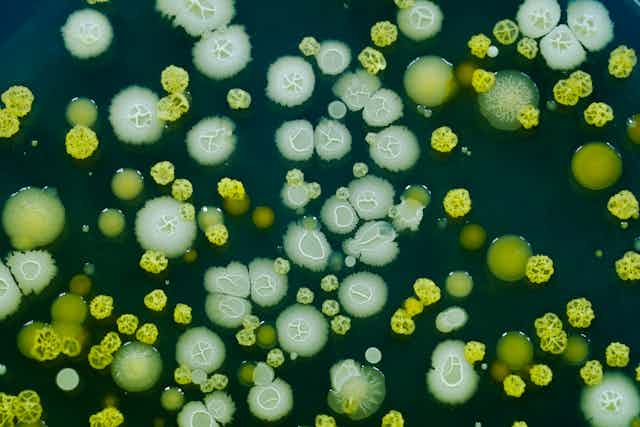Humans are transporting trillions of bacteria around the world via tourism, food and shipping, without stopping to think about the potential damage being caused to bacterial ecosystems.
When we think about endangered species, we typically think of charismatic mammals such as whales, tigers or pandas. But the roughly 5,500 mammal species on Earth is a relatively paltry number – and it pales in comparison with bacteria, of which there are at least a million different species.
Despite their vast numbers, little research has been done to understand the impact that modern human practices have on these tiny organisms, which have an important influence on many facets of our lives.
Read more: Microbes: the tiny sentinels that can help us diagnose sick oceans
In an article published today in Science, my colleagues and I explore how humans move bacteria around the globe, and what this might mean for our own welfare.
Human effects on our planet are so profound that we have entered a new geological age, called the Anthropocene. One of the key features of this new world is the way we affect other organisms. We have altered the distribution of animals and plants, creating problems with feral animals, weeds and other invasive species. We have caused many species to decline so much that they have gone extinct.
There are also grounds for concern over the way humans are affecting bacterial species, and in many cases we are causing the same type of problems that affect larger organisms.
Bacterial population structures are definitely changing, and bacterial species are being transported to new locations, becoming the microbial equivalent of weeds or feral animals. Perhaps some bacteria are even on their way to extinction, although we don’t really have enough information to be certain yet.
How do they get around?
Let’s start by talking about sewage and manure. Animal and human faeces release gut microorganisms back into the environment, and these organisms are vastly different from the organisms that would have been released 100 years ago. This is because humans and our domesticated animals – cows, sheep, goats, pigs and chickens – now comprise 35 times more biomass than all the wild mammals on land.
Human sewage and livestock manure contain very specific subsets of microbes, meaning those populations are enriched and replenished in the environment, at the expense of the native microbes. Sewage and manure also distribute enormous quantities of genes that confer resistance to antibiotics and disinfectants.
Waste water, sewage sludge and manure are used extensively in agriculture. So gut organisms from humans and agricultural animals go on to contaminate foodstuffs. These food products, along with their bacteria, are then shipped around the world.
Then there are the 1.2 billion international tourist movements per year, which also unintentionally transport gut microorganisms to exotic locations. For instance, tourism can rapidly spread antibiotic resistant pathogens between continents.
It’s not just humans and their food that cause concern – there are also vast quantities of microbe-laden materials that move along with us. Each year, roughly 100 million tonnes of ballast water are discharged from ships in US ports alone. This movement of microorganisms via shipping is changing the distribution of bacteria in the oceans. It also transports pathogens such as cholera.
Humans also move vast quantities of sand, soil and rock. It may seem hard to believe, but it is estimated that human activities are now responsible for moving more soil than all natural processes combined. As every gram of soil contains roughly a billion bacteria,this amounts to huge numbers of microorganisms being moved around the planet.
The fallout
Why should we care if bacteria are being spread to new places? Besides the obvious potential for spreading diseases to humans, animals and crops, there are also hidden dangers.
Microorganisms are invisible to the naked eye, so we tend to ignore them and don’t necessarily appreciate their role in how the planet operates. Bacteria are crucial to biogeochemistry – the cycling of nutrients and other chemicals through ecosystems.
Read more: Your microbiome is shared with your family ... including your pets
For instance, before humans invented a way to make fertiliser industrially, every single nitrogen atom in our proteins and DNA had to be chemically captured by a bacterial cell before it could be taken up by plants and then enter the human food chain. The oxygen we breathe is largely made by photosynthetic microorganisms in the oceans (and not mainly by rainforests, as is commonly believed).
Our effects on bacteria have the potential to alter these fundamental bacterial functions. It is vital to gain a better understanding of how humans are affecting microbes’ distribution, their abundance, and their life-sustaining processes. Although bacteria are invisible, we overlook them at our peril.

